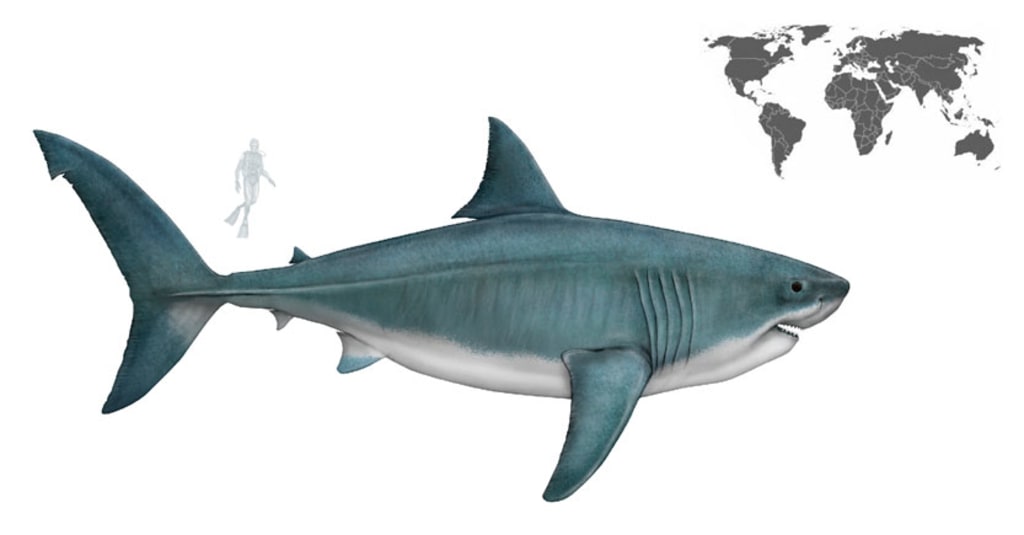Unveiling the Enigmatic Megalodon
The Ancient Giant of the Seas

Introduction:
The oceans, spanning vast expanses of our planet, have always held secrets that captivate and intrigue us. Among the countless wonders that lie beneath the surface, the Megalodon reigns supreme as one of the most captivating creatures to have ever existed. Often referred to as the "giant white shark," the Megalodon was an awe-inspiring apex predator that ruled the seas millions of years ago. In this article, we will delve into the fascinating world of the Megalodon, exploring its remarkable characteristics, its ecological significance, and the mysteries that still shroud its existence.
Size and Appearance:
The Megalodon, meaning "big tooth," was a true titan of the ancient oceans. Belonging to the extinct family of sharks called Otodontidae, this colossal predator lived approximately 23 to 3.6 million years ago, during the Cenozoic Era. Estimates of its size vary, but the general consensus is that the Megalodon reached lengths of up to 50 to 60 feet (15 to 18 meters) and weighed a staggering 50 to 70 tons. To put this into perspective, it dwarfed even the largest great white sharks of today.
One of the most awe-inspiring features of the Megalodon was its teeth. Fossilized teeth are the primary evidence of this prehistoric creature's existence, and they can measure over 7 inches (18 centimeters) in length. These teeth were incredibly strong and designed for capturing and crushing its prey with ease. With a mouthful of these enormous serrated teeth, the Megalodon was well-equipped to tackle a wide range of marine life, including whales, seals, and other large marine mammals.
Ecological Significance:
The Megalodon occupied a crucial position in the ancient marine ecosystem as a top predator. Its presence significantly influenced the balance of the oceans, shaping the populations of other species. As an apex predator, the Megalodon controlled the abundance and distribution of its prey, preventing any one species from dominating the marine food chain.
By regulating the populations of marine mammals, the Megalodon indirectly impacted the evolution and diversity of other organisms. It is believed that the decline and eventual extinction of the Megalodon led to significant ecological changes in the oceans, potentially allowing other marine predators, such as killer whales, to flourish and fill the vacant niche.
Extinction and Lingering Mysteries:
The reasons behind the Megalodon's extinction remain a subject of scientific debate. While there is no concrete evidence to conclusively explain its demise, several theories have been proposed. One prevailing hypothesis suggests that changes in global climate and oceanic conditions, along with the disappearance of its primary prey, may have played a significant role in the Megalodon's decline.
Another intriguing theory suggests that competition with other evolving marine predators could have contributed to the extinction of the Megalodon. As marine mammals adapted and developed more sophisticated defense mechanisms, the Megalodon's hunting tactics may have become less effective, leading to its eventual demise.
Despite the wealth of knowledge gathered about the Megalodon through fossil remains, there are still mysteries surrounding its existence. Some reports and alleged sightings claim that the Megalodon might have survived extinction and lurks in the unexplored depths of our oceans. However, these claims lack substantial scientific evidence and are largely considered to be speculative or fictional.
Conclusion:
The Megalodon, with its immense size and fearsome appearance, remains an enduring symbol of the ancient marine world. Through the study of its fossilized remains, we have gained valuable insights into the ecology and dynamics of the prehistoric oceans. While the Megalodon's reign may have ended millions of years ago
About the Creator
Enjoyed the story? Support the Creator.
Subscribe for free to receive all their stories in your feed. You could also pledge your support or give them a one-off tip, letting them know you appreciate their work.





Comments
There are no comments for this story
Be the first to respond and start the conversation.